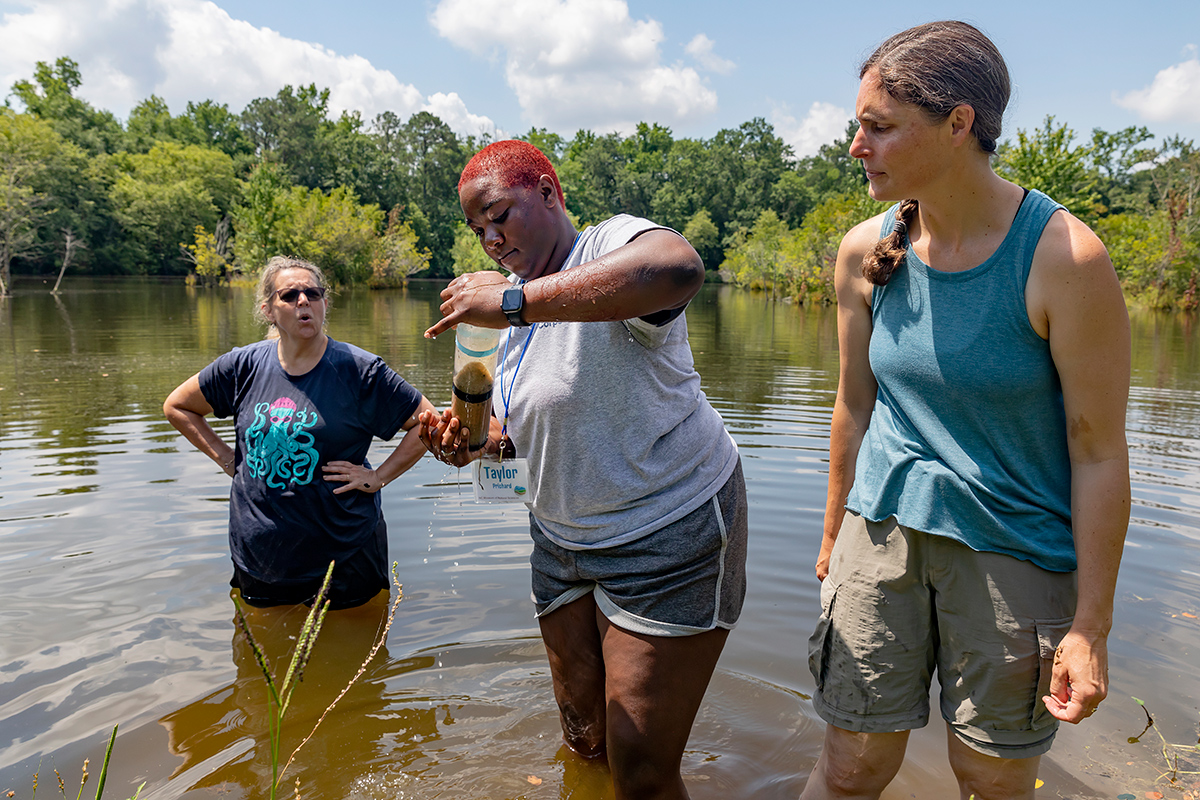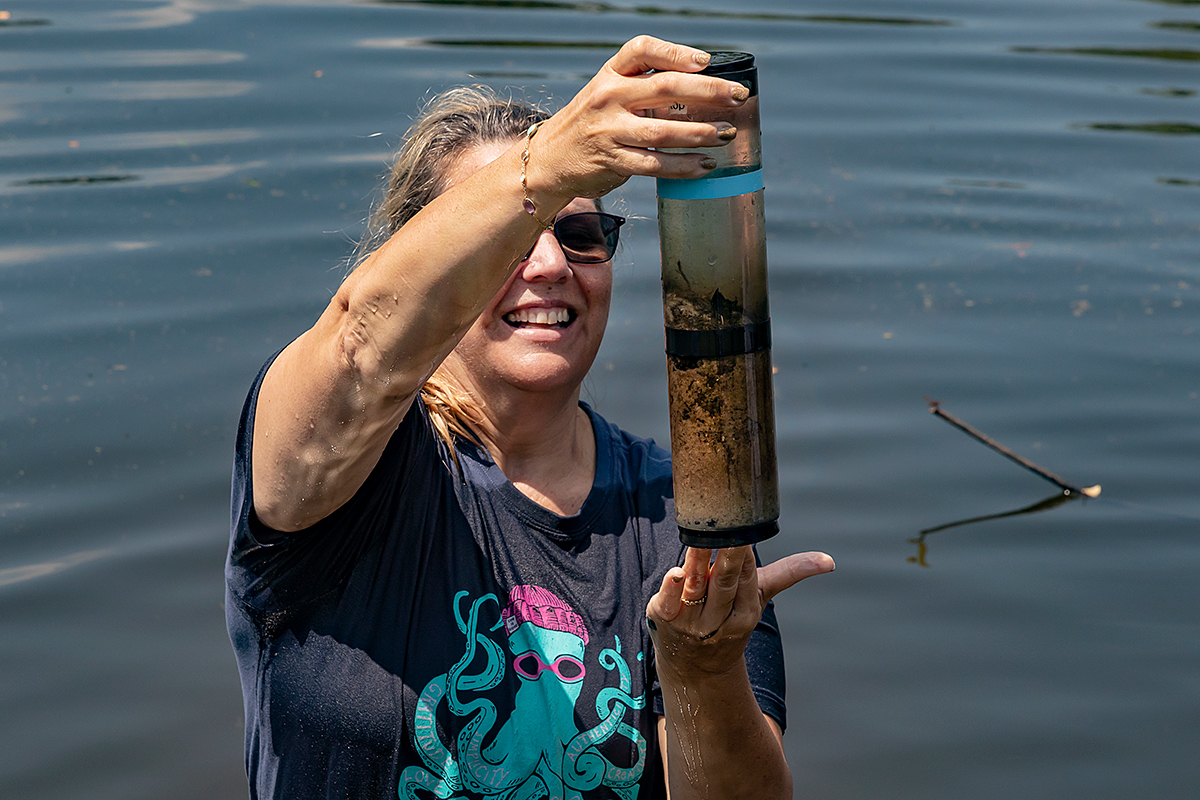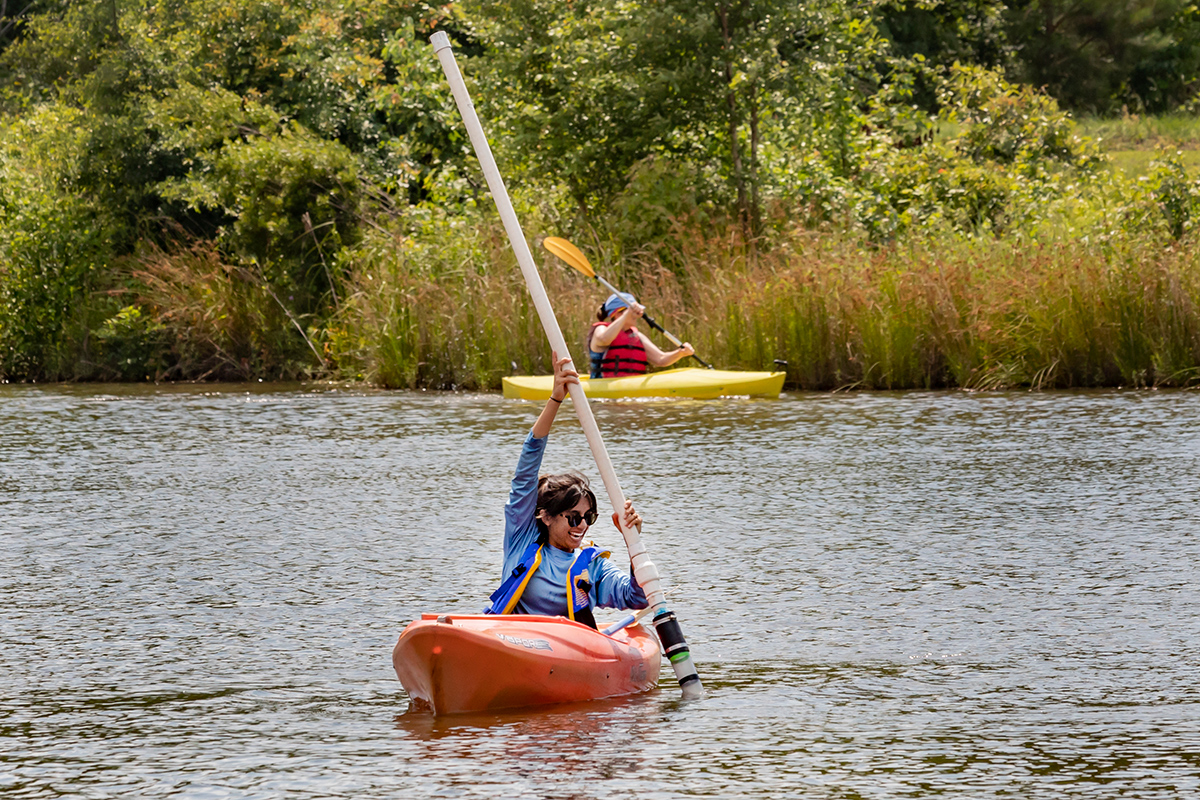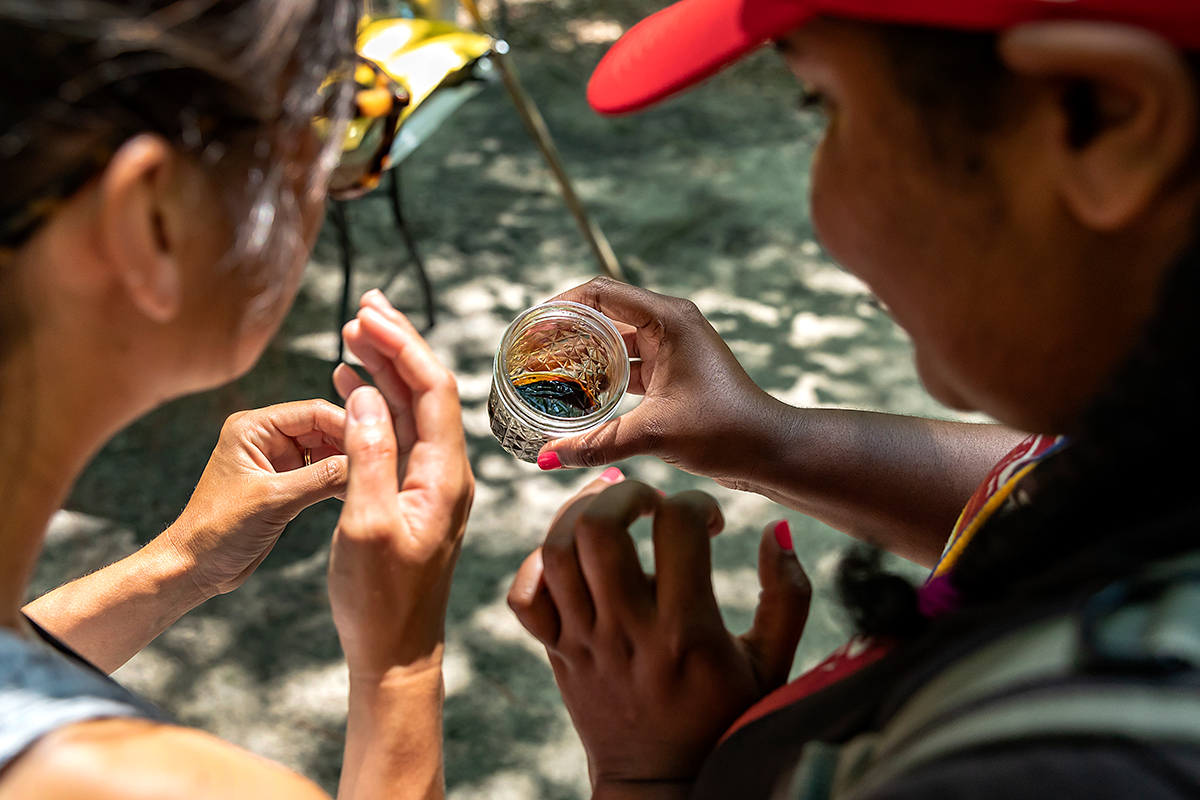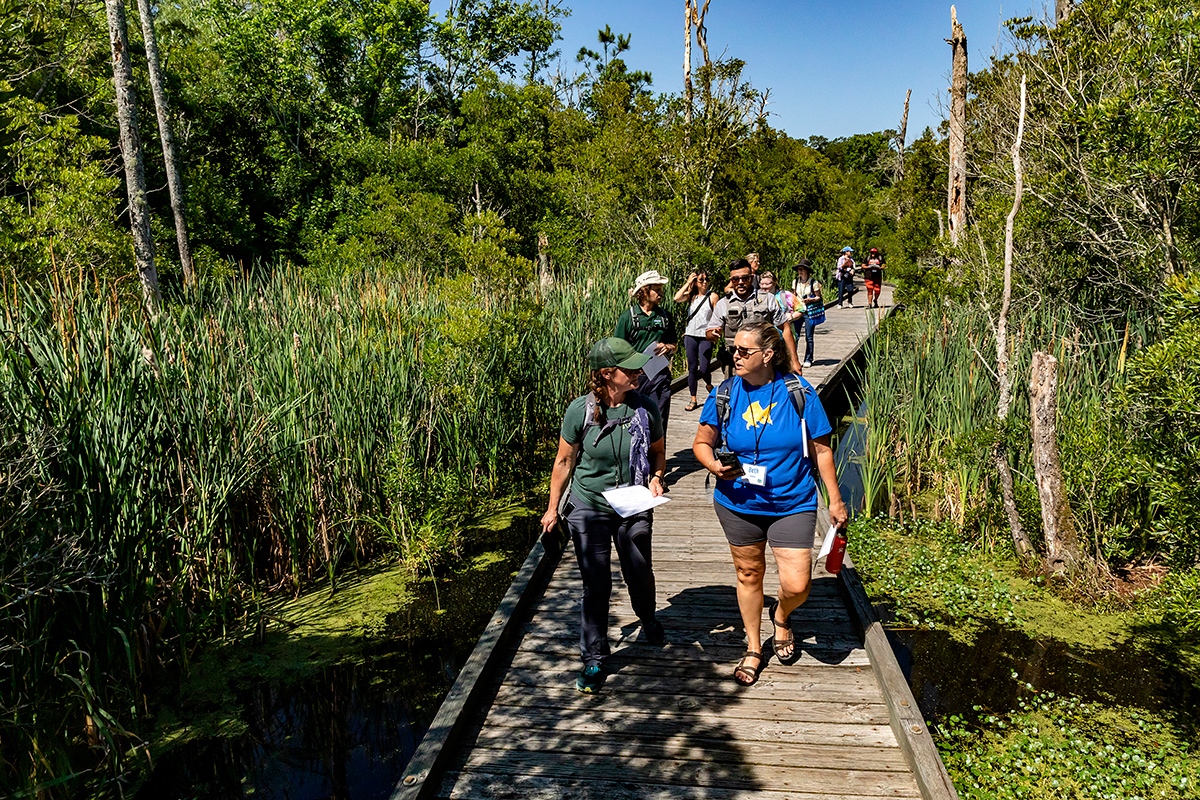Bringing classroom learning to life
A new UNC Institute for the Environment program provides teachers with hands-on geoscience learning opportunities so they can replicate some of that experience in their classrooms.
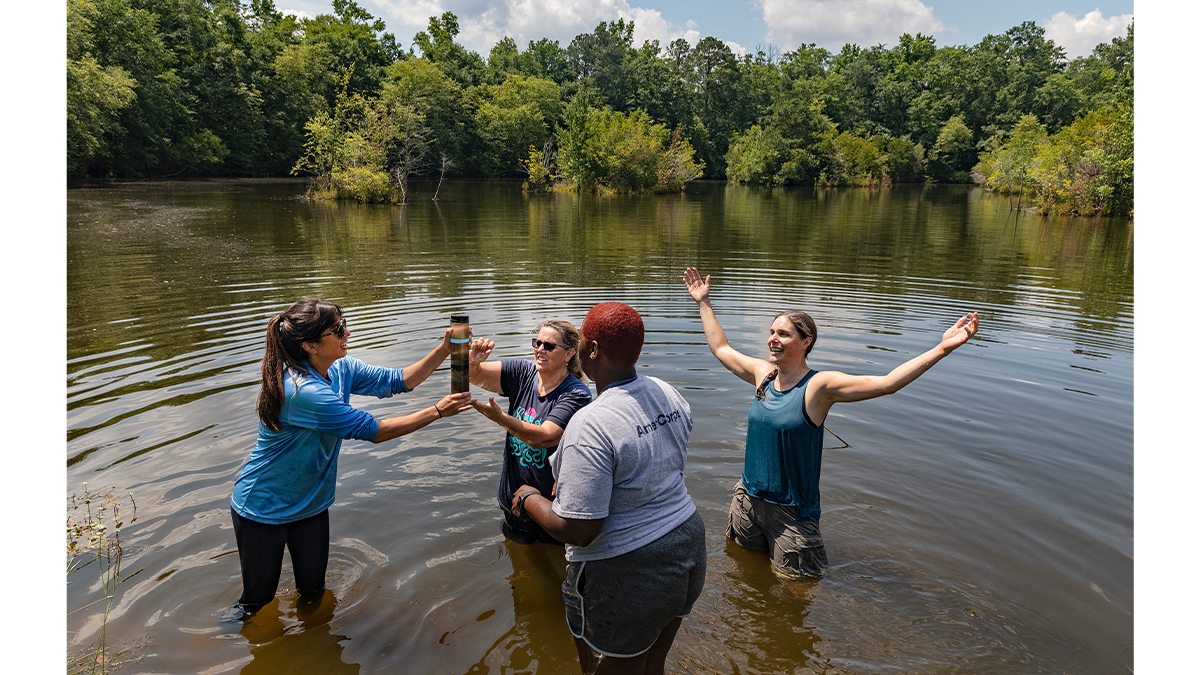
Teachers from eastern North Carolina stepped out of their classrooms and into nature this summer to learn more about geoscience so they can bring that knowledge back to their students.
The experience was part of a new UNC Institute for the Environment program called Geoscience Teaching Outdoors in North Carolina, or GET OUT in NC. The program aims to help teachers mentor students and encourage their interest in pursuing careers in fields that focus on topics such as water quality, watershed management, geology and renewable energy.
“I think for a lot of our teachers — a lot of whom are working with populations that are typically underrepresented in the sciences — this has been a really neat experience for them to think about how to make their science teaching and learning environments more inclusive for all of their students,” said Sarah Yelton, the environmental education and citizen science program manager with the Institute for the Environment’s Center for Public Engagement with Science.
GET OUT in NC is funded by the National Science Foundation with support from various partners in the Eastern North Carolina, including the North Carolina Museum of Natural Sciences at Contentnea Creek and the North Carolina State Parks.
During the three-day session this summer, the teachers collected soil samples from a lake at Contentnea Creek in Grifton, North Carolina, kayaked and hiked through the swamp forests and marshes in Goose Creek State Park, visited a museum and listened to presentations by Carolina researchers.
“The main reason I wanted to come is because programs like this are so motivating and inspiring, and surrounding yourself with other teachers that want to be motivated and inspired, too, hypes me up and keeps me in the field,” said Lauren Thompson, a teacher and the lead coordinator of marine sciences at Eugene Ashley High School in Wilmington.
Thompson is also eager to share potential career options with students interested in geosciences.
“Today, Sarah [Yelton] was talking about the career of being a park ranger, and we have two state parks in Wilmington,” she said. “Not every kid wants to be a researcher. Not every kid wants to be a marine biologist, so here’s another career field that would be awesome to get into, and it’s one I have the ability to expose them to. That was a total lightbulb moment for me.”
Yelton hopes that the program will inspire the next generation of earth and environmental scientists.
“How can we make learning fun and exciting and be outdoors in all of these places that they are learning about in a textbook and make it real and make them think, ‘Oh, yeah, I really like this. this could be a way that I could make a living one day?’” she said. “Just making all of these connections is exciting for our teachers, and it’s super exciting for me.”
Continue reading to see GET OUT in NC in action
Anne Smiley, a doctoral candidate from the UNC Institute of Marine Sciences, answers questions during a presentation about water quality issues in North Carolina.
Taylor Prichard (center), an outdoor curriculum specialist, AmeriCorps member and teacher education specialist with the North Carolina Museum of Natural Sciences in Raleigh, collects a sediment sample from Contentnea Creek.
Beth Keeter, who teaches honors Earth science and AP environmental science at D.H. Conley High School in Greenville, North Carolina, holds up a sediment sample she collected.
Smiley shows educators how to collect a sediment sample from the bottom of a lake while kayaking.
Smiley and Renee Jones-Carvalho, an earth and environmental science teacher at Western Harnett High School in Lillington, North Carolina, examine a tar-like substance during a presentation by a park ranger. The substance has been used for various purposes, like waterproofing boats, throughout history.
Educators explore the swamp forest and marsh at Goose Creek State Park with park ranger Nick Botello-Hernandez.
Environmental specialist Joe Hawley holds a piece of oakum, which has been used for caulking or sealing joints in wooden vessels

